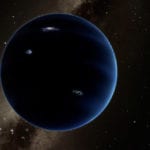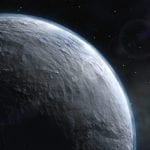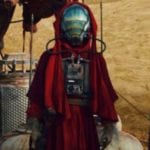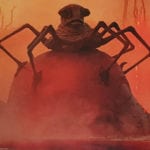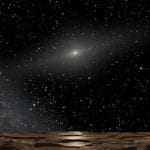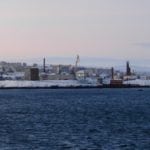 Technology
Technology  Technology
Technology  Humans
Humans 10 Everyday Human Behaviors That Are Actually Survival Instincts
 Animals
Animals 10 Animals That Humiliated and Harmed Historical Leaders
 History
History 10 Most Influential Protests in Modern History
 Creepy
Creepy 10 More Representations of Death from Myth, Legend, and Folktale
 Technology
Technology 10 Scientific Breakthroughs of 2025 That’ll Change Everything
 Our World
Our World 10 Ways Icelandic Culture Makes Other Countries Look Boring
 Misconceptions
Misconceptions 10 Common Misconceptions About the Victorian Era
 Mysteries
Mysteries 10 Strange Unexplained Mysteries of 2025
 Miscellaneous
Miscellaneous 10 of History’s Most Bell-Ringing Finishing Moves
 Technology
Technology Top 10 Everyday Tech Buzzwords That Hide a Darker Past
 Humans
Humans 10 Everyday Human Behaviors That Are Actually Survival Instincts
 Animals
Animals 10 Animals That Humiliated and Harmed Historical Leaders
Who's Behind Listverse?

Jamie Frater
Head Editor
Jamie founded Listverse due to an insatiable desire to share fascinating, obscure, and bizarre facts. He has been a guest speaker on numerous national radio and television stations and is a five time published author.
More About Us History
History 10 Most Influential Protests in Modern History
 Creepy
Creepy 10 More Representations of Death from Myth, Legend, and Folktale
 Technology
Technology 10 Scientific Breakthroughs of 2025 That’ll Change Everything
 Our World
Our World 10 Ways Icelandic Culture Makes Other Countries Look Boring
 Misconceptions
Misconceptions 10 Common Misconceptions About the Victorian Era
 Mysteries
Mysteries 10 Strange Unexplained Mysteries of 2025
 Miscellaneous
Miscellaneous 10 of History’s Most Bell-Ringing Finishing Moves
10 Planets From The Star Wars Universe That Exist In Our Own
Like it or not, there is no denying that Star Wars has had an immeasurable cultural impact on our society. Birthing iconic moments and revolutionizing the science fiction genre, Star Wars will always be a beloved series, even by those who are not into movies. George Lucas crafted lovable and intriguing characters (not including the prequels) and created a phenomenal universe full of unique and inspired planets. Some of those planets have doppelgangers which could exist in our own universe.
Though it should be noted that Lucas personally didn’t write all the Star Wars novels, comics, games, tie-in TV shows, and so on, they’re all considered canon. The planets and moons mentioned in the list below all appear in at least one of the current six Star Wars films and are thus Lucas’s creations, though the finer details may have been fleshed out by someone else. Either way, it’s really quite stunning that fictional planets, containing extreme ecosystems or unfathomable features, could exist in a solar system far, far away.
10 Kepler-47c: Home Of Tatooine’s Iconic Binary Sunsets
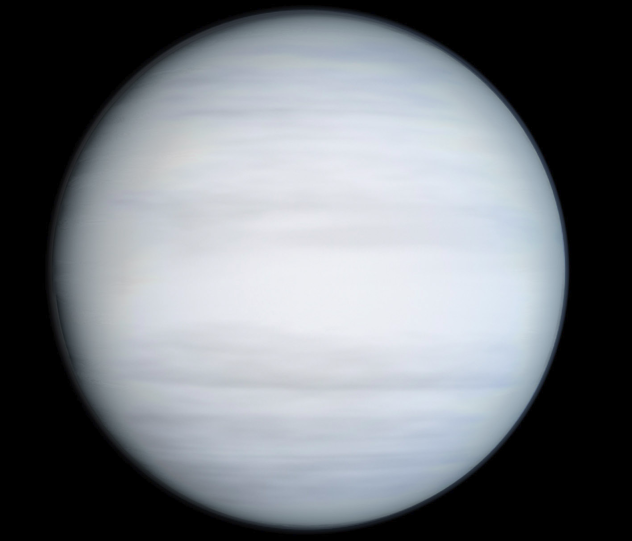
Perhaps one of the most iconic scenes from Star Wars: A New Hope, if not the entire franchise, is the awe-inspiring binary sunset on Luke Skywalker’s home planet of Tatooine. That, coupled with John William’s sublime score, never fails to induce goosebumps among moviegoers. It’s a moment that sci-fi fans cherish, which makes the fact that this world may actually exist all the more tantalizing.
In 2012, astronomers discovered Kepler-47c, an exoplanet nearly 5,000 light-years away, lying within the all-important habitable zone of the Kepler-47 binary star system. Kepler-47c follows a circumbinary orbit, which would allow the beautiful double sunsets of Tatooine. Circumbinary orbit means that a planet orbits two stars instead of one, so the planet couldn’t have formed within this orbit but instead migrated into it.
But before you pack your lightsabers and Jawaese phrase books, you should know that despite lying in the habitable zone, Kepler-47c is, in fact, an uninhabitable gas giant. Of course, that doesn’t mean there aren’t any desert moons orbiting the distant star. Until astronomers can get a closer look at the system, we can live in hope.
9 Enceladus: Hoth’s Twin
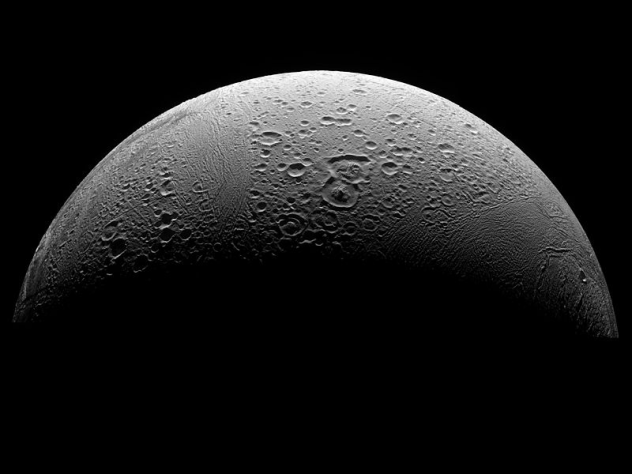
The infamous Battle of Hoth solidified The Empire Strikes Back as the vast majority of fans’ favorite Star Wars film. This snow-covered Tauntaun habitat could very well exist and may be a lot closer than you may think. Saturn’s icy moon of Enceladus is rife with cryovolcanic activity on its south pole, meaning that instead of spewing out lava, it erupts water and other volatiles. The cold conditions mean that the water falls back to the surface as snow, albeit at an incredibly slow rate of 0.0001 centimeters (0.0004 in) per year.
Never fear though, for snowfalls as deep as 100m have been discovered on Enceladus. Due to the moon’s incredibly low gravity, the snow particles that form would be only a few microns across (making them finer than talcum powder), meaning that an unsuspecting AT-AT walker would easily sink into some of the deeper patches of snow.
8 Europa: The Smaller, Younger Mygeeto
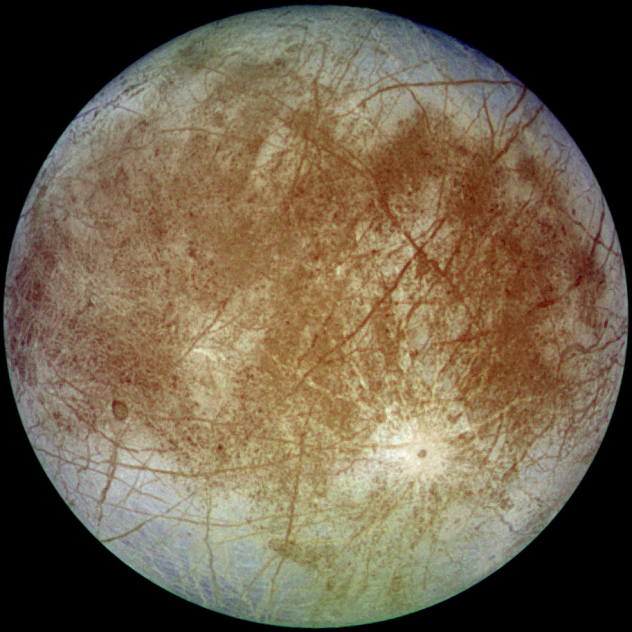
The frozen planet of Mygeeto is now the grave of Jedi Master Ki-Adi-Mundi, who was betrayed by his own clone troopers and tragically gunned down by CC-1138. You may barely remember this scene, as it fell within the densely packed montage of Jedi deaths featured in Star Wars: Episode III. While the events that occurred on Mygeeto were pretty underwhelming, the similarities between Europa and this frozen world are really quite striking.
The fictional planet of Mygeeto has a cold, barren, icy surface due to years of dormant tectonic activity. Jupiter’s fourth-largest moon, Europa could be a younger version of Mygeeto (even though it’s a moon, not a planet) with a smooth, crater-free, icy surface, indicating plenty of geological activity. (The general rule of planetology is the fewer craters on a surface, the younger and more active it must be, because lava has covered up any craters.) Once this young moon cools completely, the ice will remain long after the tectonic shifts have stopped, thus creating a smaller version of Mygeeto in our very own solar system.
Europa is also covered in jagged ice blades, some protruding 10 meters (33 ft) above the surface, making it an ideal place to have a disappointing, unimportant battle sequence involving characters that few care about.
7 Kepler-86c: Future Site Of The Cloud City
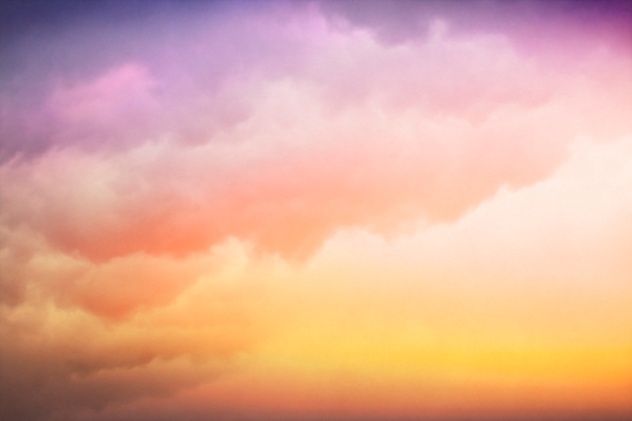
Floating high above the toxic clouds of the gas giant Bespin, the crystal-clean Cloud City is situated safely in a layer of oxygen. There are many gas giants in the universe, but very few are located within their star’s habitable zone. Kepler-86b is one of the few that is.
Obviously, a huge, floating city doesn’t appear naturally, so humans will need to colonize this planet, and it’s possible to do so on Kepler-86c for a number of reasons. First of all, it lies within the habitable zone, so humans aren’t going to freeze or burn to death should they venture there. Secondly, they could introduce cyanobacteria to the atmosphere. Cyanobacteria get their energy from photosynthesis, a by-product of which is oxygen. By the time humans have the technology to reach Kepler-86c, which is more than 1,200 light-years away, it’s entirely possible that we would also have the technology to make a floating metropolis on the distant planet. Let’s just hope that we have developed enough willpower to resist the temptations of the Dark Side by then.
6 Mars: Geonosis’s Twin

The Battle of Geonosis, the first conflict of the infamous clone wars as told in Episode II: Attack of the Clones, took place on this desert world. If the name doesn’t sound familiar, it was the planet full of fly-like creatures that pitted Obi-Wan, Anakin, and Padme against a rhino, a lizard cat, and a giant praying mantis. The planet is littered with Grand Canyon–esque features, carved by the surging torrents of flash floods, leaving behind sweeping deserts that give Geonosis a trademark reddish glow. Let’s not kid around here; its Mars.
At roughly 12,000 kilometers (7,500 mi) in diameter, Geonosis is almost twice the diameter of Mars, and is actually closer in size to our own planet. However, at least in terms of surface features, Geonosis is a nearly identical match to Earth’s second-closest neighbor. Both have a small amounts of water present (Mars has 2 percent, Geonosis has 5 percent), are covered in a sweeping desert (classifying them as desert planets), have had their surfaces eroded by water, and are nicknamed “The Red Planet.” Mars is essentially a pint-sized version of Geonosis.
5 Earth: Alderaan 2.0
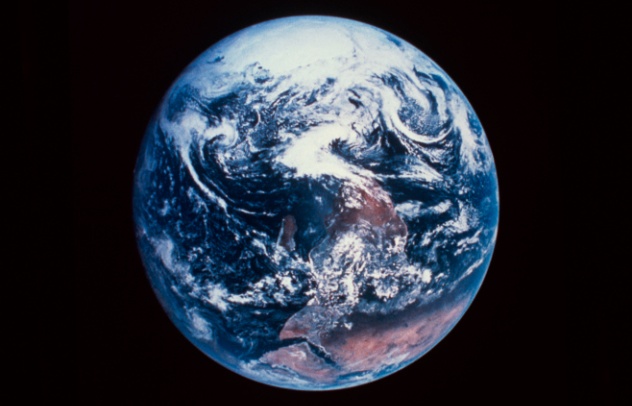
Home to the lovely Princess Leia, the peaceful planet Alderaan was on-screen for only a few seconds before being blown to smithereens by the infamous Death Star. Images of Alderaan’s atmospheric clouds above its vast oceans and plentiful landmass highlight that there is no planet from the Star Wars universe closer to our own. It’s not exactly beyond the realm of possibility that George Lucas intentionally modeled the planet after Earth, and Alderaan’s details clearly indicate its similarity.
Alderaan has a rotational period (day length) of 24 hours, an orbital period (year) of 365 days, a planetary diameter of 12,500 kilometers (7,800 mi), and a single moon caught in its orbit, all features identical to Earth. With breathable air, lavish oceans, luscious grasslands, a functioning government, and a rich, educated heritage, it’s clear that Earth is the closest we’re going to get to Alderaan. Let’s just hope that a malevolent empire doesn’t show up in our solar system any time soon.
4 Mimas: Death Star Cosplayer
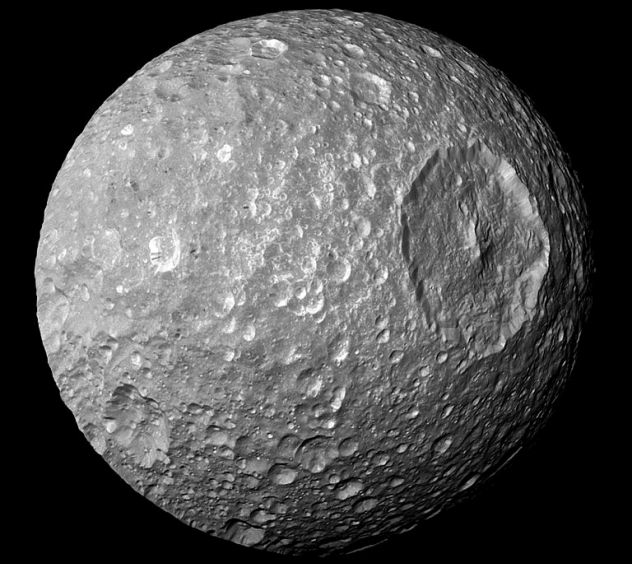
That’s no space station, it’s a moon . . . and it’s lurking within our very own solar system. Discovered in 1789 by William Herschel, Mimas is Saturn’s seventh-largest moon, and due to its massive crater, it bears an uncanny resemblance to the planet-destroying Death Star. While the original Death Star was 160 kilometers (99 mi) in diameter, and its successor, Death Star II, was a mighty 900 kilometers (559 mi) across, Mimas sits nicely in the middle at 397 kilometers (247 mi) in diameter, making it perhaps Death Star 1.5.
The first photographs of Mimas didn’t appear until Voyagers One and Two flew by the tiny moon in 1980, three years after Star Wars was released, making the resemblance between it and the Death Star even more incredible. Maybe the Force told George Lucas about Mimas. (The Force can do that, right?)
By sheer coincidence, the characteristic Herschel crater (named after the moon’s discoverer) is almost perfectly scaled to the Death Star superlaser’s focusing eye. The Hershel crater has been measured to be roughly 140 kilometers (87 mi) across, whereas the superlaser dish on Death Star I is 40 kilometers (25 mi). Since Death Star I is 2.5 times smaller than Mimas, the superlaser dish can be scaled up to 100 kilometers (62 mi) (70 percent of the Mimas crater diameter), and while it’s not an exact match, it’s pretty close by astronomical standards.
So, if Mimas was the Death Star, would we be safe? Well, Mimas sits at a nice, far-off distance of 1.2 billion kilometers, well beyond the Death Star superlaser’s 420 million–kilometer maximum range, and certainly clear of its optimum 2 million–kilometer range. However, that’s based on its current position, assuming it can’t move, which, unfortunately, it can. The Death Star is equipped with a class-4.0 hyperdrive, allowing it to travel hundreds of thousands of light-years in only a few hours, meaning it would traverse the distance to Earth (0.000127 percent of a light-year) in mere seconds. Even though to destroy a planet, the Death Star requires a full-charge pulse of 2.4 x 1032 W (one million times more than the Sun’s energy output), the laser’s charge-up time would be far quicker than any response time Earth would have. We’re sorry to be the bearers of bad news.
3 Endor Could Exist
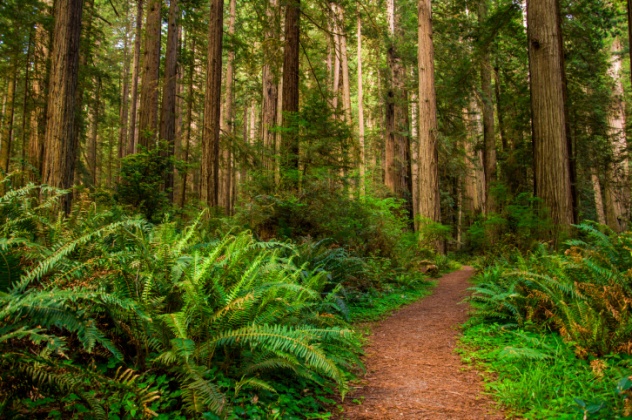
The forest moon of Endor is the glorified Ewok sanctuary where the closing scenes of the Star Wars saga took place. Using nothing but furry pluck and comical traps, the feral teddy bears defeated the Galactic Empire by destroying the Death Star’s shield generator. With twigs and mud, they allowed the Rebels to blow up the Death Star a second time around. While, sadly, the existence of Ewoks is quite unlikely, as would be their ability to take down an entire heavily armed, technologically advanced, and infinitely more powerful empire, the forest moon that they dwell on could well exist.
Very few gas giants have been discovered beyond our solar system that actually lie within their star’s ideal habitable zone. Though no exosolar moons have been discovered, all of these far-off exoplanets are more than likely to have at least one moon. Look at our local gas giants as an example: Saturn and Jupiter have over 120 moons between them.
Some of the best gaseous candidates discovered so far include 47–Ursae Majoris b, HD-28185b, Upsilon Andromedae d, and 55-Cancri f. However, before you buy everything you need to own a pet Ewok, the closest planetary candidate for Endor is over 41 light-years away on 55-Cancri f, so perhaps it’s best to stick to the plush versions for now. They are certainly less noisy and destructive than the real ones, anyway.
2 UCF-1.01: Another Mustafar
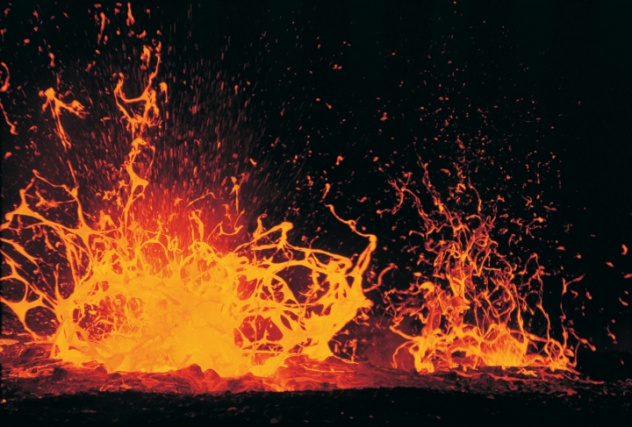
Mustafar was the location of the final showdown between Obi-Wan and Anakin. With lava spewing everywhere across the entire surface, Mustafar may remind you of Jupiter’s volcanic moon Io; they are in both similar in size, after all. (Io has a diameter of 3,600 kilometers [2,200 mi], while Mustafar is 4,200 kilometers [2,600 mi] across.) However, Io is a moon, not a planet, and while admittedly this is a technicality that we overlooked for other examples in this article, there are numerous examples of lava planets out there, specifically Kepler-78b, COROT-7b, and Alpha Centauri–Bb.
All of the aforementioned candidates, however, are far larger than Mustafar, so perhaps a better example would be the recently discovered UCF-1.01. UCF-1.01 is exactly double Mustafar’s diameter at 8,400 kilometers (5,200 mi) and sits 2.7 million kilometers from its parent star (for reference, Earth is 150 million kilometers from the Sun), making the surface temperature of this lava planet an insane 540 degrees Celsius (1,004 °F). No wonder Anakin got so badly burned.
The epic duel on Mustafar took 910 special-effects artists and 70,441 man-hours to create 49 seconds of footage. With those resources on hand, you’d think that we could have discovered the lava planet, traveled there, and filmed the fight on-location, with enough time left over to go sightseeing.
1 Kepler-22b: Kamino’s Double
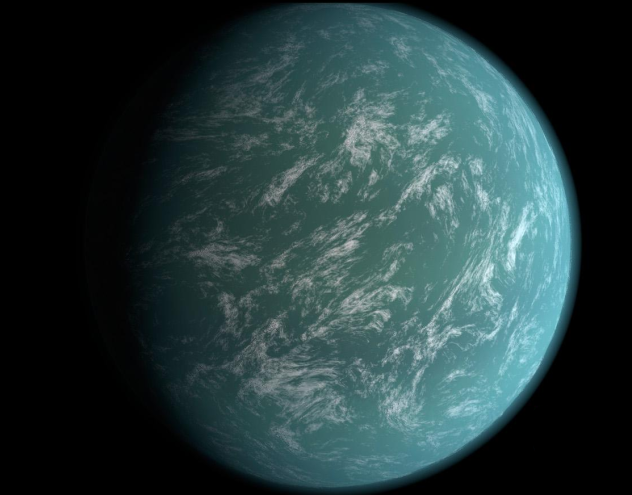
Also known as Planet of Storms, the entire surface of Kamino is covered by a global ocean which submerged its continents following a massive climate change. (Very subtle, George Lucas.) Despite its huge ocean, life still prevails, with a highly technological yet elegant race, the Kaminoans, living in pods above the surging waves. They are known for their advanced cloning techniques, which are subsequently taken advantage of in Episode II: Attack of the Clones. While the idea of cloning isn’t exactly an alien concept to us humans, and the notion of a malevolent, corrupt political empire certainly isn’t either, the watery world of Kamino may also be realistic.
There are numerous recently discovered planets that are thought to be water planets, such as Kepler-62e, GJ-1214b and 55–Cancri Ae, but it is Kepler-22b that is an ideal candidate for Kamino. Although they differ in size (Kepler-22b being 33 percent larger than Kamino), both are totally covered by vast oceans, and both lie snugly within the habitable zone of their parent star. To confirm if this was indeed Kamino, we would need a telescope powerful enough to image the cloning pods that cover the surface of a planet 600 light-years away. It will be a while before we have telescopes that powerful, and even longer before we have the capability of traveling such huge distances, so perhaps it is best to perfect cloning on Earth instead of relying on the Kaminoans to teach us how to do it.
My name is Andy, and I like to write things. I write reviews for DeadPress.co.uk and 7BitArcade.com, and I dabble in a bit of satire over at Undergroundmgzn.com. I prefer gigs over clubs, whiskey over wine, and Christina Hendricks over any woman ever made, ever.
